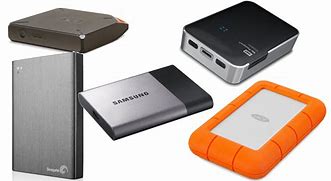Data Storage Solutions Part 1: Exploring Types of Data Storage and Benefits of Hard Drives
Exploring Types of Data Storage and Benefits of Hard Drives
When it comes to businesses and IT teams, having secure, reliable storage solutions is paramount. Faced with ever-growing needs for data storage, organizations must consider a range of storage solutions in order to meet the increasing demands of their operations. In order to help make sense of the various options out there, let’s explore some of the different types of data storage solutions available and discuss the advantages of hard drives (HDDs)–both internal and external.
Types of Data Storage
 To provide an effective and efficient storage system, organizations must understand the range of storage solutions available and how they can best serve their needs. The two main types of data storage are direct-attached storage (DAS) and network-attached storage (NAS). Direct-attached storage refers to a storage system that is locally attached to a single computer or server, as well as to its associated peripherals. On the other hand, network-attached storage (NAS) is a dedicated file-level storage system connected to a local area network (LAN) that can be accessed by multiple users at once.
To provide an effective and efficient storage system, organizations must understand the range of storage solutions available and how they can best serve their needs. The two main types of data storage are direct-attached storage (DAS) and network-attached storage (NAS). Direct-attached storage refers to a storage system that is locally attached to a single computer or server, as well as to its associated peripherals. On the other hand, network-attached storage (NAS) is a dedicated file-level storage system connected to a local area network (LAN) that can be accessed by multiple users at once.
The cloud has also become increasingly popular as a form of data storage. It can offer significant benefits due to its flexibility, scalability, and cost-effectiveness, allowing businesses to store, manage, and access files anytime and from anywhere. However, compared to traditional data storage solutions, it can be more complex to set up and manage.
can offer significant benefits due to its flexibility, scalability, and cost-effectiveness, allowing businesses to store, manage, and access files anytime and from anywhere. However, compared to traditional data storage solutions, it can be more complex to set up and manage.
Hard Drives (HDDs) Internal and External

We will now focus specifically on hard drives (HDDs), since they are a commonly used storage solution. HDDs, both internal and external, provide a wide range of storage capacity and are often much cheaper than other types of storage systems.
Internal hard drives are the original type of data storage and are installed directly inside the physical structure of the computer system. They come in a variety of sizes and formats, but the most popular ones are 3.5-inch and 2.5-inch HDDs. The benefits of these drives include their reliability, capacity, and cost-effectiveness. As such, they have remained the go-to type of data storage for many users, businesses and organizations over the years.

External HDDs are a portable and flexible storage solution, offering similar capacity and reliability as the internal drives, with the added benefit of portability. They offer the same level of security and reliability experienced with internal drives, but with enhanced portability, given their small form-factor and light weight. This makes them convenient for taking files on the go, as well as backing up important data when needed.
In conclusion, hard drives (HDDs)–both internal and external–remain a popular data storage solution due to their reliability, capacity, and cost-effectiveness. By understanding the different types of data storage available, organizations can better assess which solutions are best suited for their specific requirements.




Leave a comment